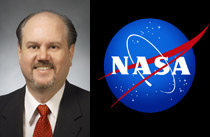
NASA Glenn becoming more data-centric across many fronts
Sean Gallagher, the NASA Glenn Research Center chief information officer, said the OMB cyber sprint is helping his center change its perspective not only with c...
NASA Glenn Research Center is taking advantage of the 30-day cyber sprint to advance its IT security agenda.
The space center already had centralized and consolidated the management of its IT security services.
Sean Gallagher, the NASA Glenn Research Center chief information officer, said now the goal is to move into a data-centric view.
“This shift is something our program protection folks are taking a close look at this year,” he said. “I think long term this information centric or data centric will give us a lot of flexibility as we look at emerging architectures, mobility and cloud capabilities. But up front it requires a lot of work, mapping out the information, where it resides, how important it is, who it is important to, how sensitive it is and then designing appropriate controls at that level. So looking at how we handle our information protection and adjusting a little bit of our system security planning activities around that will be a big priority for us this year.”
Gallagher said the move to a new data-centric view is part of a three-pronged approach to cybersecurity.
He said the first part is the basics of cybersecurity — those things highlighted in the Office of Management and Budget’s cyber sprint from earlier this summer such as two-factor authentication and protecting key data assets.
The second piece is around partnerships both at the center level, but also across the entire space agency and with other federal agencies and contractors.
The final piece is education and awareness of the workforce.
“We can’t operate as an island. We do a lot of partnerships not just here on center with the program offices and mission IT, but we also partner with our peers at other centers as well as the agency’s office of the CIO,” he said. “At a federal government level, those partnerships are important here so we are seeing a lot of the use of shared tools and shared practices come down from the Homeland Security Department and some of the other federal organizations.”
Gallagher also credited Glenn Research Center’s chief information security officer, Gilbert Winter, who has done a lot locally to build regional partnerships around cybersecurity with Wright-Patterson Air Force Base and regional FBI office.
Outside of cyber, Gallagher said he’s also focused on several other priorities including optimization and consolidation of hardware and servers to deliver IT more efficiently.
He said by improving how Glenn Research Center manages and uses hardware, it lets him potentially shift funding to other mission-centric needs, whether IT or not.
“One of the things that we hear a lot of talk about is the cloud and I think that fits well in this focus area. I see a lot of opportunity in the cloud as most CIOs do. We leverage a couple of software-as-a-service products out there today, but for the most part we haven’t jumped into cloud entirely at the center level,” Gallagher said. “There’s a lot going on at the agency level and we are looking to leverage that and really partner with some of the agency programs in the agency’s office of the CIO to really look at our data center capabilities and what we can do with them, and let’s say, an infrastructure-as-a-service provider elsewhere and how do we optimize our footprint elsewhere.”
He said Glenn used to have a 15,000 square foot data center filled with mainframes and server farms, and over the last several years he has spent time virtualizing those servers.
Now Glenn Research Center is ready for the next step whether the cloud or using someone else’s data center.
“When I think of cloud I also think about some of the software-as-a-service and productivity tools that are out there,” Gallagher said. “Collaborative tools are something that is important to all of us, especially a workforce that is focused on productivity and collaboration as NASA is. We are looking at over the next couple of years at a need to replace our collaborative tools and platform. I certainly see cloud and some of the products that are out there today as great candidates to remove some of the barriers that we have with on-premise solutions and drive a little more productivity, communication and collaboration. We don’t have any significant investments targeted there today.”
Related to improving productivity, Gallagher said he’s looking at how mobility can play a bigger role in helping Glenn Research Center meet its mission.
But he said it’s hard to quantify the productivity improvements from using mobile devices or making applications more mobile friendly.
Gallagher said first Glenn Research Center is using the typical laptop, desktop and mobile phone refresh cycle to move into the mobile world with smartphones and the higher performing devices.
“We also are partnering with some of the business units across the center to make sure as we shift to mobile devices we also are looking at the applications,” he said. “We’ve got a lot of facilities, maintenance personnel and test engineers that spend their time not in an office, but walking around the center. We are working a couple of pilot activities with them and our contractor workforce is working with them to upgrade their applications to be a little more mobile enabled and give them devices they can operate with on the go.”
Gallagher said the pilot is fairly small and focused on work requests and maintenance requests and inspections.
Copyright © 2024 Federal News Network. All rights reserved. This website is not intended for users located within the European Economic Area.
Jason Miller is executive editor of Federal News Network and directs news coverage on the people, policy and programs of the federal government.
Follow @jmillerWFED



